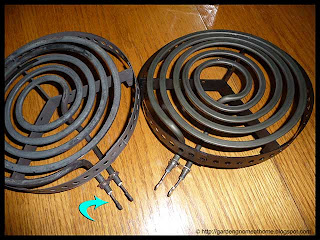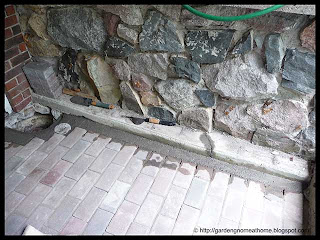A couple of days ago I posted about the new lantern style LED emergency light we added to our emergency preparedness supplies. LED lights are perfect for emergency lights because there is no flame, they are battery friendly and the bulbs never need replacement so you don't have keep replacement bulbs on hand. On average each LED last about 100,000 hours which means each LED run for 24 hours per day would last 4, 167 days or 11 years on average. The manufacturers have made these types of lights so that they have more than one LED so even if one diode goes out the rest will continue to light up until they too fail. The downside to LED lighting is they do eventually end up in the landfill but at a much lower rate than a CFL light
It is small, compact, comes in a variety of colour and it is inexpensive. The light can be installed near the light switch in every room so it is as simple that in the event of a power failure there is always a back-up light source. One can be easily installed in your vehicle or boat and because the stick on there is no danger of them getting lost in the glove compartment. Turn on or off as needed. There is no searching for flashlights or other alternative lighting during a power outage. The only thing you have to do is check from time to time to be sure the batteries are charged.
We are advid campers turned boaters so know one of the first places to look for emergency preparedness supplies is in the camping section of any department store. I spotted this great 24 LED camp light with hanger that can be used to light up the interior of dining tents as well as regular tents. This LED light puts out a considerable more light than the 3 LED diode versions. What is really nice about this light is it could easily be hung from a hook in a main living area in the house to provide evening lighting during a power outage. It can also be installed in a more permanent location using two sided tape. This fixture would be great for emergency lighting in the family room where everyone is gathered giving enough light to perhaps play a board game until the power comes back on.
Both of these safe, supplemental emergency lighting fixtures will operate on rechargeable batteries that can be recharged using a solar powered battery recharger. This is important during prolonged periods of power outages. More importantly they are very low cost solutions that can be attached in convenient locations throughout the house. The smaller ones will cost between $1 and $2 each costing less that $20 to have one in every room of your house. The larger one will cost about $8. In addition to the cost of the fixtures you will have to buy rechargeable batteries (highly recommended) but I also recommend keeping a small supply of regular alkaline batteries on hand for emergency purposes in the event there isn't enough solar power to recharge the rechargeable batteries if needed.
Garden Gnome
©2006-2010



























